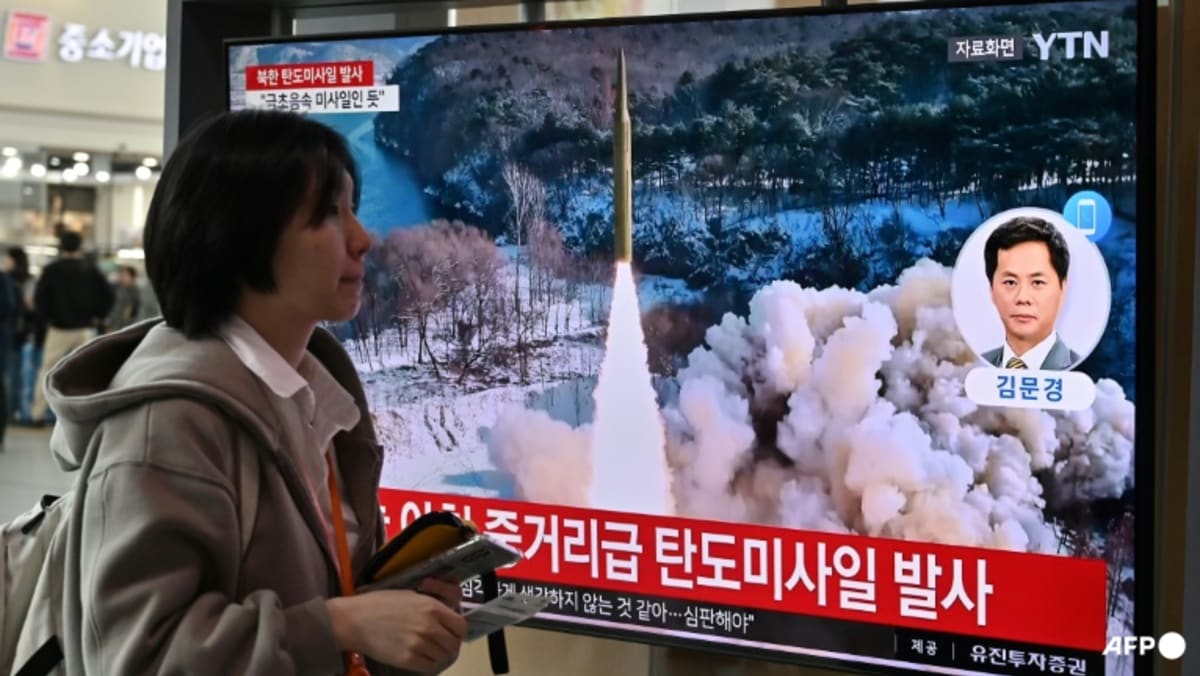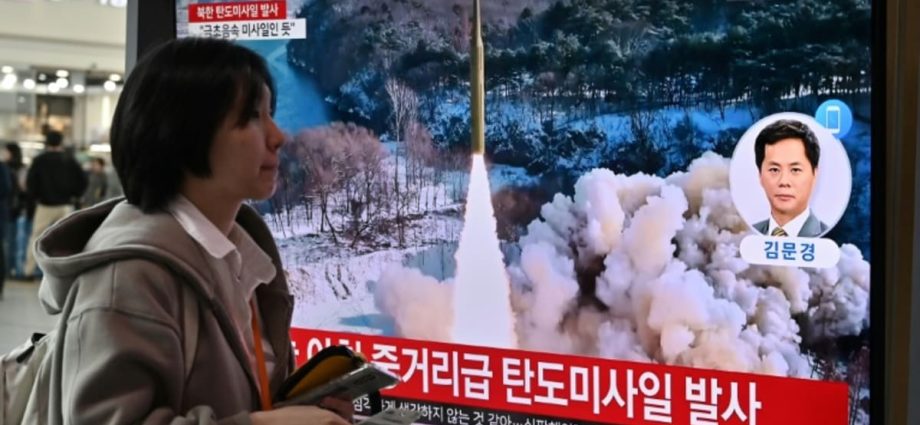
SANCTIONS MONITORING?
“The Kim regime prioritises advancing its military capabilities and doesn’t care to stay quiet during the South Korean legislative election campaign,” said Leif-Eric Easley, a professor at Ewha University in Seoul.
“But firing an intermediate-range missile lacks the shock value of a full-range ICBM launch or a nuclear test, so it’s unlikely to swing any National Assembly seats.”
Pyongyang has been under a raft of sanctions since its second nuclear test in 2009, but the development of its nuclear and weapons programmes has continued unabated.
So far this year, the nuclear-armed North has declared South Korea its “principal enemy”, jettisoned agencies dedicated to reunification and outreach, and threatened war over “even 0.001mm” of territorial infringement.
The Tuesday launch “appears to be part of Pyongyang’s missile development blueprint, including hypersonic weapons,” said Han Kwon-hee of the Korea Association of Defence Industry Studies.
It seems Kim is developing such technology domestically, rather than with Russian help “given the sensitive nature of the weapons”, he added.
Pyongyang has recently boosted ties with traditional ally Russia.
In September last year, Russian President Vladimir Putin and Kim held a summit in Russia’s far east, during which Kim declared that ties with Moscow were his country’s “number one priority”.
The United States subsequently claimed Pyongyang had begun providing Moscow with weapons.
South Korea asserted last month that North Korea had shipped around 7,000 containers of arms to Russia for its war with Ukraine since the transfers began around July – likely in exchange for Russian help with Kim’s satellite programmes.

